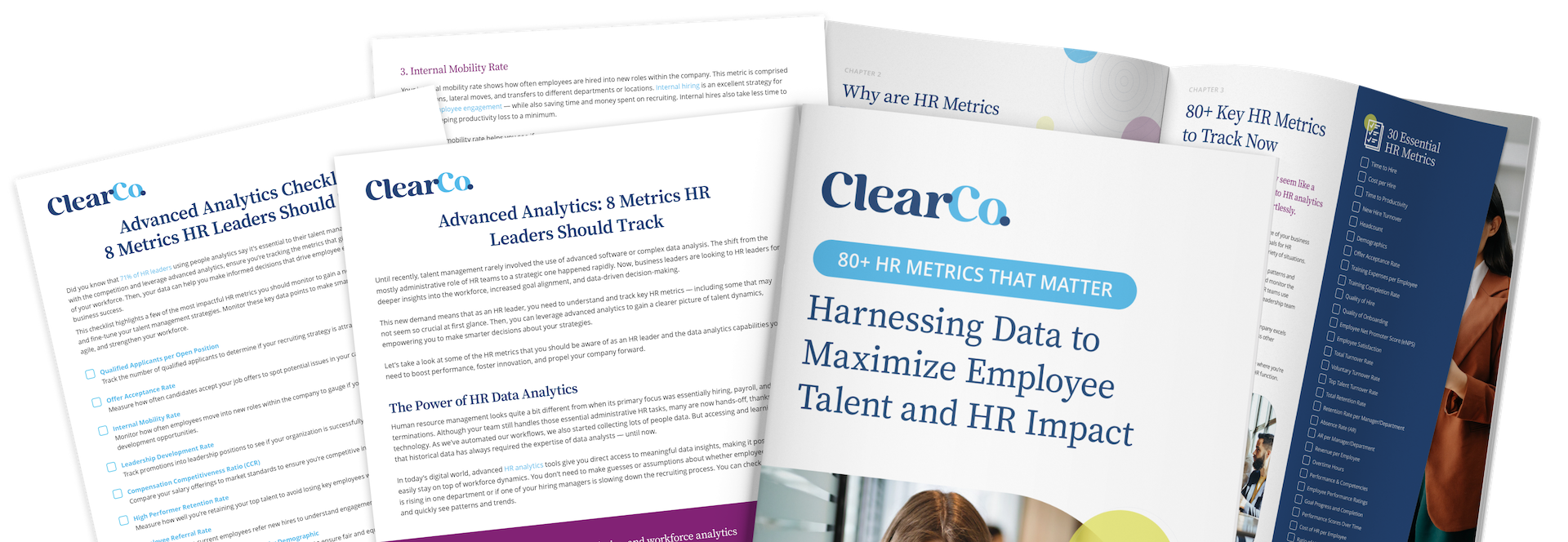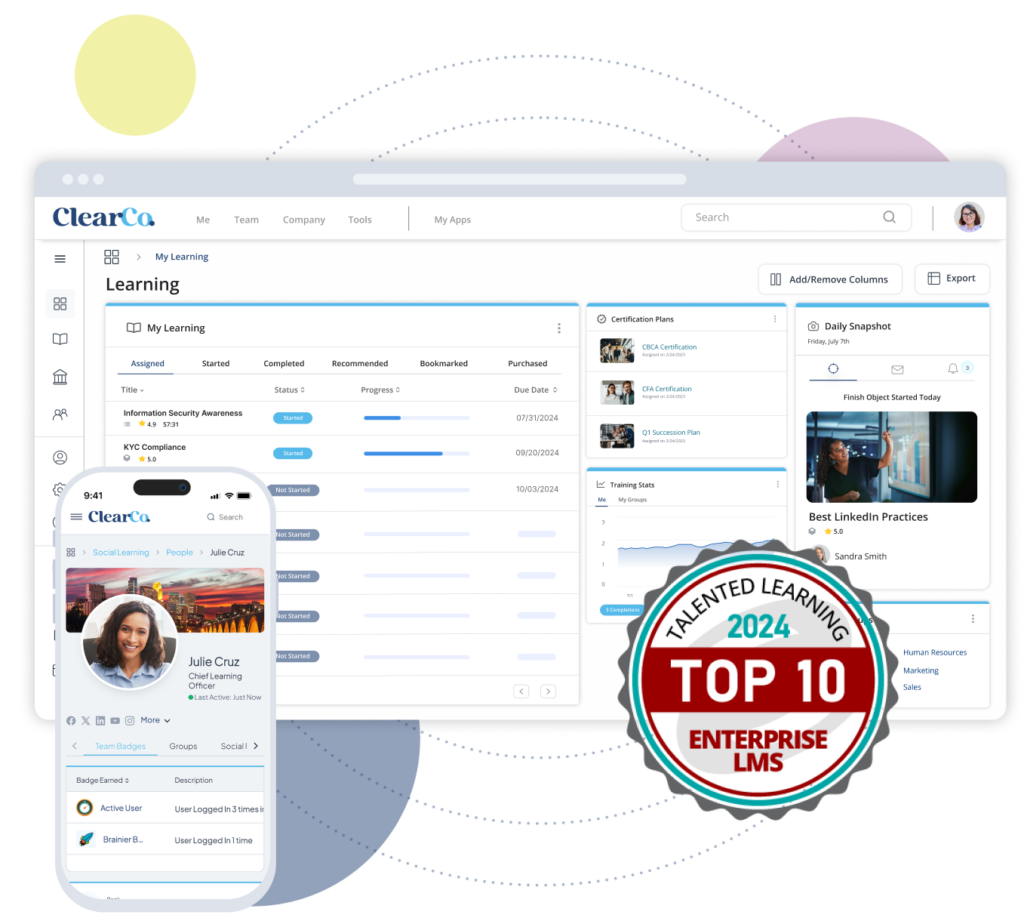This post on effective professional development programs was published in September 2021. It was updated with new information in January 2025.
Professional development programs aren’t a new concept, but you’re probably hearing about them more than ever. The state of the labor market and the workplace have brought about an increased need for employee learning and development (L&D). These are a few factors contributing to that need:
- Impending skills gaps and labor shortages
- Record-low employee engagement levels
- Increased demand for L&D opportunities from employees and candidates
Employee development is becoming increasingly critical — employers believe 44% of their employees’ skills will be disrupted by 2030. But unfortunately, most employees are not getting the opportunities they want, with just 25% saying their company’s L&D program works. It’s no wonder that 86% of employees would switch jobs for one with more learning opportunities.
That record-low employee engagement level — just 31% — shouldn’t come as a surprise, either. With their talents at risk of becoming obsolete and seemingly no help from employers, it can be difficult to envision long-term success in any role.
All of these can be addressed with employee professional development programs, that is, if your initiatives are thoughtfully created and well-supported. Whether you’re refining your existing professional development program or starting from scratch, take a look at a few of the ways you can ensure your efforts are effective (no matter your budget).
What Is a Professional Development Program?
A professional development program is an intentional, structured approach to helping employees build skills, grow their careers, and stay engaged at work. They go beyond the mandatory training courses you complete online when you start working or renew a certification. These programs are designed to create opportunities for continuous learning that improve job performance and prepare employees for future roles.
Your program can offer professional development in many forms, including:
- On-the-job training to help employees build practical skills as they work
- Workshops, seminars, and conferences to stay clued-in to industry trends and best practices
- Online courses, certifications, or tuition reimbursement to deepen employees’ knowledge in specific areas, hone particular strengths, and demonstrate expertise
- Mentorship and coaching to provide personalized career guidance and foster increased job satisfaction
- Leadership development programs to nurture employees with the potential to grow within the company
- Access to AI-powered learning platforms to promote skill retention with tailored learning paths, custom course materials, and engaging content
Why Your Company Needs Professional Development
When done effectively, professional development programs can have a substantial impact on your talent management strategy and business outcomes, according to the statistics:
- Employee retention rates are 34% higher among jobs that offer professional development opportunities.
- Employees are 15% more engaged when they can access career development opportunities.
- 90% of Millennials say professional growth opportunities are a top priority in their decision about where to work.
- Organizations with a strong learning culture are 56% more likely to be first-to-market with their products and services.
A well-structured professional development program benefits both employees and the organization. Your team members will gain confidence, do better work, and feel more engaged in their careers. At the same time, the company benefits from their increased productivity, loyalty, and resiliency. But, you don’t benefit from one-off, disjointed L&D workshops and training programs.
The best professional development programs are aligned with business goals, tailored to employees’ needs, and given the appropriate support and resources. Keep reading for key strategies to ensure your program is as effective as possible.
8 Ways to Support Effective Professional Development Programs
1. Know Your Needs
What makes professional development as effective as possible? Understanding the needs of your business and your employees inside out. For example, if your organization tends to hire leadership externally rather than promote from within, you might want to prioritize soft skills training or offer tuition reimbursement for select degree programs.
Start by assessing your workforce’s current skills and future needs. Are there skill gaps preventing employees from advancing? Are industry changes — like AI adoption — creating new demand for specific skills? Ask for input from employees and managers through surveys, analyze performance trends, and give skills assessments to help identify key development areas.
It’s also important to align professional development with company goals. If your business is expanding into new markets, employees may need cross-cultural training. If innovation is a priority, investing in continuous learning opportunities for tech and leadership teams can drive long-term success.
2. Use Modern Learning Technology
Technology completely revolutionizes what your company’s professional development programs can offer, making them more engaging, efficient, and personalized. A learning management system (LMS) is a must-have for streamlining training, tracking progress, and offering a variety of learning formats — think interactive courses, microlearning modules, and even AI-driven coaching.
Modern LMS platforms also enable unique learning paths that adapt training to employees’ skill levels and career goals. This approach ensures employees get relevant, impactful experiences that help them truly learn new skills rather than a one-size-fits-all curriculum that just checks the box for L&D.
Employees should be able to engage with training when and where it works best for them. With mobile-friendly learning and on-demand access, an LMS makes on-the-go L&D possible. The easier it is to learn, the more likely your employees are to pursue it.
3. Make Learning Accessible
If employees don’t have the time, tools, or support to participate in professional learning, even the best programs will fall flat. Making learning accessible means:
- Giving employees flexible training options like self-paced courses, virtual workshops, and in-person training.
- Setting aside dedicated learning time during work hours so employees don’t have to choose between productivity and development.
- Ensuring accessibility for employees with disabilities and different learning styles by using closed captions, screen reader-friendly materials, and multiple content formats.
Remove barriers to learning to make it easier for your employees to gain new skills and polish their strengths. As you build a more skilled workforce, you’ll also foster higher engagement, which leads to higher retention and stronger performance.
4. Give Frequent, Real-Time Feedback
The best feedback is timely, specific, and actionable. Research shows that 96% of employees would like to receive feedback much more frequently than managers offer it. More frequent feedback has positive effects on employee engagement, performance, and retention.
Treating frequent feedback as a means to improve performance and empower employees makes for a healthier workplace culture and more productive, efficient, and happier employees. Real-time, constructive feedback gives employees a chance to apply that feedback right away and improve constantly.
Many learning management systems can provide fast feedback automatically. While employees work through training sessions online, they might answer questions after each lesson or complete a quiz at the end, getting their score immediately. The most advanced LMS solutions offer video coaching with AI-powered feedback, instantly generating custom suggestions and learning objects.
5. Conduct Formal Performance Reviews
Giving frequent, informal feedback doesn’t mean that formal performance reviews go out the window. It’s still important to spend time discussing employees’ performance intentionally on a regular basis. Performance reviews are an opportunity to give promotions and raises, recognize growth, and set new career goals for employees.
Managers and employees can also use performance reviews to address skills gaps or standout strengths. This helps employees’ career development by giving them the chance to close the gaps and build on their strengths.
55% of employees say annual reviews do not improve their performance. A successful professional development plan might include mid-year reviews instead. In addition to giving more frequent feedback, checking in purposefully with formal reviews takes some of the pressure off of employees and managers.
6. Offer Mentorship Or Coaching
There’s a clear case for mentoring in your professional development plan: research shows that 91% of employees with mentors are satisfied with their jobs. They’re more committed to their companies and more likely to be promoted. Employees prefer mentoring and on-the-job training over other career growth tools like conferences, workshops, or events.
Mentorship or coaching also gives seasoned employees a chance to share their skills and expertise. It establishes connections between coworkers and promotes an inviting, empowered workplace culture. Mentors who are in leadership foster new leaders and make succession planning easier. This creates a highly qualified talent pipeline within your organization.
7. Recognize And Celebrate Employees
Recognizing contributions and celebrating accomplishments helps employees feel confident in their skills and motivated to keep growing. It also leads to higher loyalty and engagement, which are critical to professional development success. Recognitions can be included in performance reviews to boost morale and help make the case for promotions.
8. Measure L&D’s Impact
How do you know if your professional development program is working? You measure it. Tracking the right L&D metrics can show what’s effective and where you need to reevaluate.
Metrics to monitor include:
- Training completion rates – Are employees engaging with learning materials?
- Skills progression – Are they gaining and applying new skills?
- Employee feedback – Do they feel the training is valuable and relevant?
- Retention and promotion rates – Are employees staying longer and advancing in their careers?
Utilizing LMS reporting and analytics tools makes it easier to gather and interpret these insights. Over time, this data helps continuously refine your program to ensure it stays aligned with both employee needs and business goals.
Software To Support Professional Development Programs
The benefits of professional development programs are clear, but it’s up to you to ensure your plan produces results. Engage and retain your workforce and increase business resiliency and success with structured L&D.
With ClearCompany, HR and L&D teams can create and manage their development and performance management initiatives in one place. From personalized learning experiences and formal reviews to real-time feedback and in-depth analytics, you can do it all with ClearCompany.
Revamp your L&D programs and supercharge employee performance. Find out how when you sign up for a free demo of ClearCompany.



